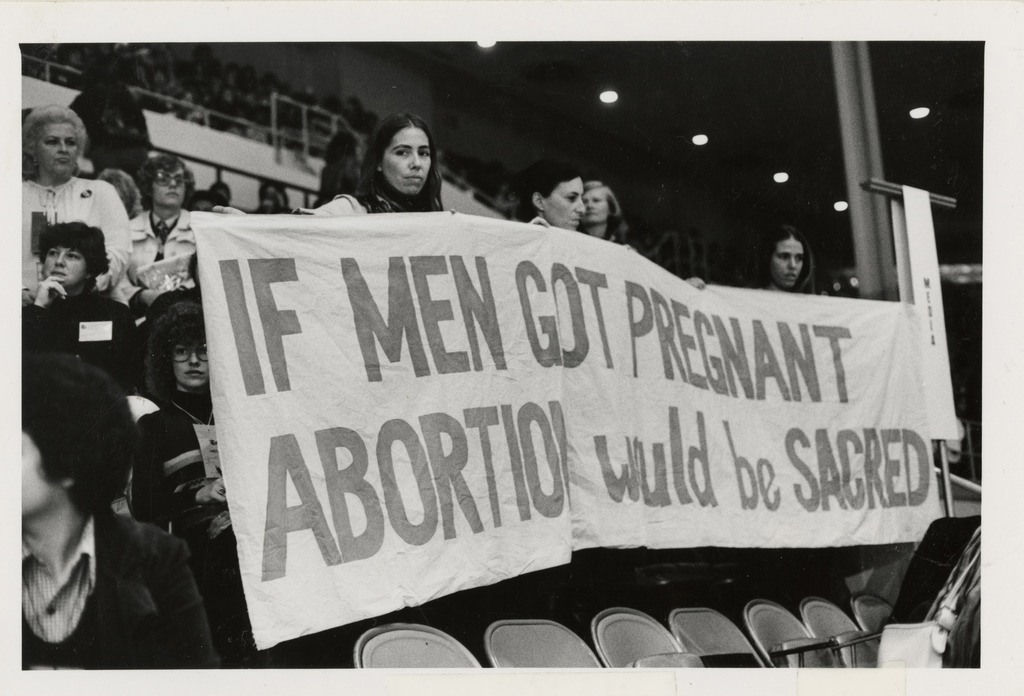
TW: Abortion, and mentions of suicide and sexual assault.
“Here is the case of a perfectly healthy baby being sacrificed for the mother’s convenience… For goodness sake, let us bring up our daughters with love and care enough to not get pregnant” (Jill Knight, former Conservative MP)
It might surprise the reader to learn that there is still no absolute right to abortion in England and Wales. In fact, legislation criminalising it still exists by virtue of s58 and 59 Offences Against the Person Act 1861 (OAPA); an Act passed some 70 years before the achievement of women’s right to vote on equal terms with men. Instead, it is the Abortion Act 1967 which carves a defence to OAPA, allowing abortion in a limited number of circumstances. Whilst this article does not seek to disregard or denigrate the successes of the Abortion Act in providing access to abortion, it argues that its clauses are largely predicated on assumptions of female irresponsibility and emotional instability. This will be explored using the Parliamentary debates during the Act’s drafting which are indicative of the false constructions of women that underpin the law.
Sally Sheldon categorises the constructions of women within the Abortion Act into two categories; women as minors and women as victims. The first, she says, is the presentation of women as minors in terms of immaturity and immorality. Indeed, Jill Knight MP calls abortion selfish in debates and suggests women terminate “simply because it may be inconvenient for a year or so to its mother.” Likewise, Mahon MP contends woman will abort “according to her wishes or whims” and is “unwomanly” for rejecting the natural outcome of sexual intercourse. The second of Sheldon’s categories is women as victims, where they are portrayed as distraught with the worry of pregnancy, and if denied an abortion “would be in a state bordering on suicide” (Lord Strange).
Both constructions suggested by Sheldon trivialise a woman’s decision-making skills and deny her any rational grounding. This can be largely contrasted to Kirkman’s finding that less than 5% of women said they made a decision to abort rapidly, and over 10% said they had to consult with an experienced counselor. Not only does this dismiss Mahon’s argument that women abort on their “wishes and whims” but also highlights the misconceptions inherent in abortion law.
Of particular concern is the absence of a clause allowing abortion in cases of pregnancy induced by rape. Originally, this was injected into the wording of the Bill but subsequently dropped for two reasons. Firstly, parliament claimed the Act’s provisions would allow rape victims an abortion under the law as it stood. Secondly, and more significantly, was the belief that women cannot be trusted to tell the truth about rape. One MP suggested many rape charges “are quite unfounded and…made for different motives.” Once again, we see the law’s assertion of female irresponsibility and incapacity to make rational decisions.
It is also important to consider the constructions of doctors under the current law. Perhaps the most striking clause of the Abortion Act is s1(1) which requires two registered doctors to approve the termination before it can be performed. Whilst on its face, this appears harmless, it becomes problematic when we realise that at the time of the Act’s drafting most, if not all, doctors were male. Indeed, doctors are consistently referred to as “he” in parliamentary debates, with MP’s calling GP’s “skilled men” who should be applauded for “keep[ing] our homes and families right.” Furthermore, Sheldon calls doctors the “epitome of maturity” and “responsibility.” In this sense, the doctor is perceived as a (male) voice of reasoning who is far better equipped to make decisions on the woman’s behalf, despite never having met her before.
This becomes more complex when s1(2) is considered. The section allows doctors to take into account “the pregnant woman’s actually or reasonably foreseeable environment” and thus her whole lifestyle. This arguably goes beyond medical matters and allows doctors to make social decisions for the woman, something outside the scope of their powers. Unsurprisingly, calls for reform of this section have been made and amendments were tabled to the HFE Act 2008. However, parliament failed to address this matter and have since made no plans to introduce a Bill specifically dealing with it.
This article has argued that, through its false constructions of woman, the Abortion Act creates its own female narrative which it seeks to regulate. Furthermore, the requirement that two doctors must certify abortion is grounded in the law’s assumption that doctors, rather than women, are better equipped to decide whether an abortion is justified. In sum, UK abortion law is characterised by archaic concepts and is in desperate need of reform. Ultimately, the Act’s greatest failure lies in its refusal to recognise abortion decisions as fundamentally belonging to the woman.



Average Rating